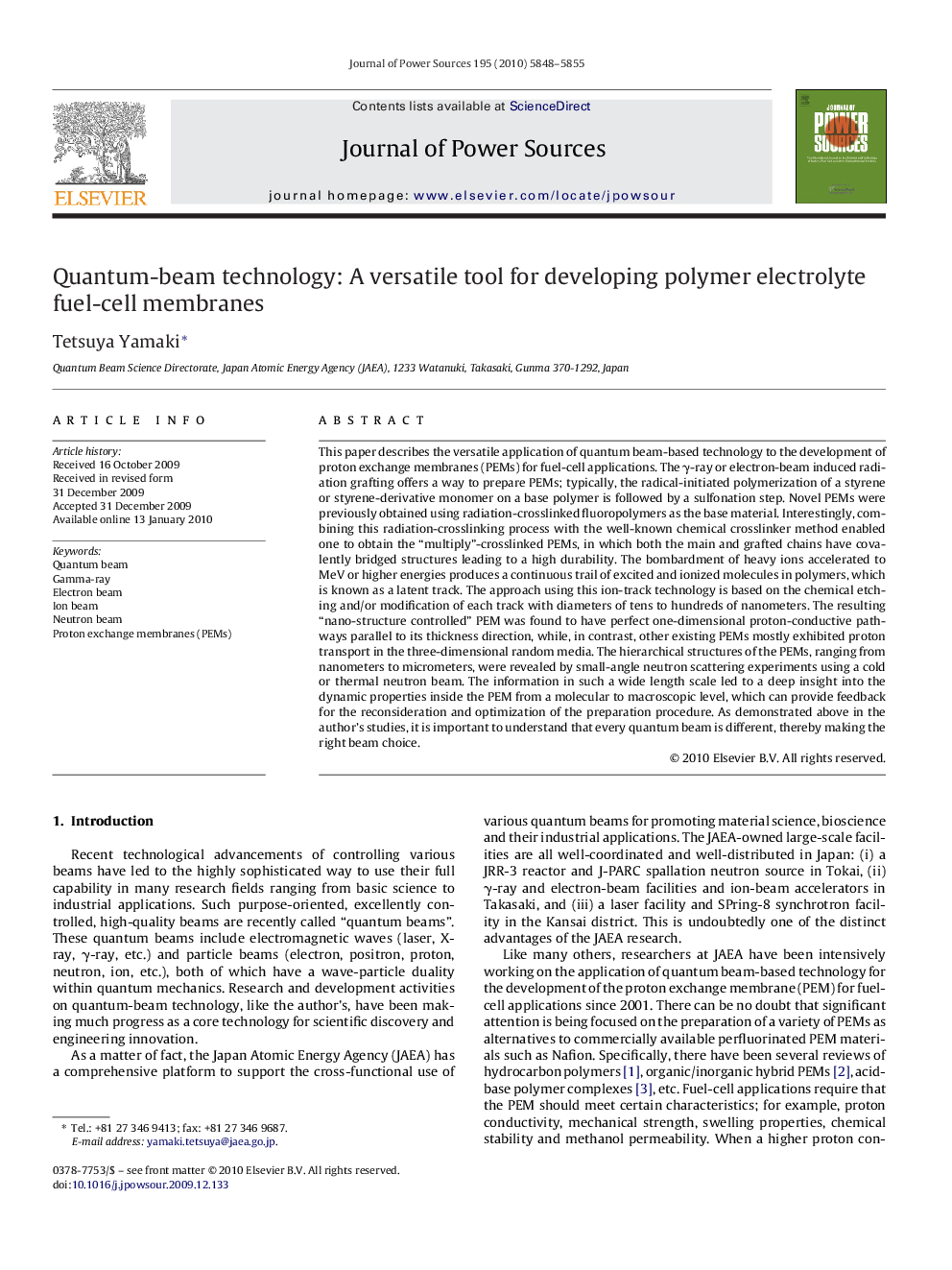| کد مقاله | کد نشریه | سال انتشار | مقاله انگلیسی | نسخه تمام متن |
|---|---|---|---|---|
| 1288969 | 973280 | 2010 | 8 صفحه PDF | دانلود رایگان |
عنوان انگلیسی مقاله ISI
Quantum-beam technology: A versatile tool for developing polymer electrolyte fuel-cell membranes
دانلود مقاله + سفارش ترجمه
دانلود مقاله ISI انگلیسی
رایگان برای ایرانیان
کلمات کلیدی
موضوعات مرتبط
مهندسی و علوم پایه
شیمی
الکتروشیمی
پیش نمایش صفحه اول مقاله

چکیده انگلیسی
This paper describes the versatile application of quantum beam-based technology to the development of proton exchange membranes (PEMs) for fuel-cell applications. The γ-ray or electron-beam induced radiation grafting offers a way to prepare PEMs; typically, the radical-initiated polymerization of a styrene or styrene-derivative monomer on a base polymer is followed by a sulfonation step. Novel PEMs were previously obtained using radiation-crosslinked fluoropolymers as the base material. Interestingly, combining this radiation-crosslinking process with the well-known chemical crosslinker method enabled one to obtain the “multiply”-crosslinked PEMs, in which both the main and grafted chains have covalently bridged structures leading to a high durability. The bombardment of heavy ions accelerated to MeV or higher energies produces a continuous trail of excited and ionized molecules in polymers, which is known as a latent track. The approach using this ion-track technology is based on the chemical etching and/or modification of each track with diameters of tens to hundreds of nanometers. The resulting “nano-structure controlled” PEM was found to have perfect one-dimensional proton-conductive pathways parallel to its thickness direction, while, in contrast, other existing PEMs mostly exhibited proton transport in the three-dimensional random media. The hierarchical structures of the PEMs, ranging from nanometers to micrometers, were revealed by small-angle neutron scattering experiments using a cold or thermal neutron beam. The information in such a wide length scale led to a deep insight into the dynamic properties inside the PEM from a molecular to macroscopic level, which can provide feedback for the reconsideration and optimization of the preparation procedure. As demonstrated above in the author's studies, it is important to understand that every quantum beam is different, thereby making the right beam choice.
ناشر
Database: Elsevier - ScienceDirect (ساینس دایرکت)
Journal: Journal of Power Sources - Volume 195, Issue 18, 15 September 2010, Pages 5848-5855
Journal: Journal of Power Sources - Volume 195, Issue 18, 15 September 2010, Pages 5848-5855
نویسندگان
Tetsuya Yamaki,